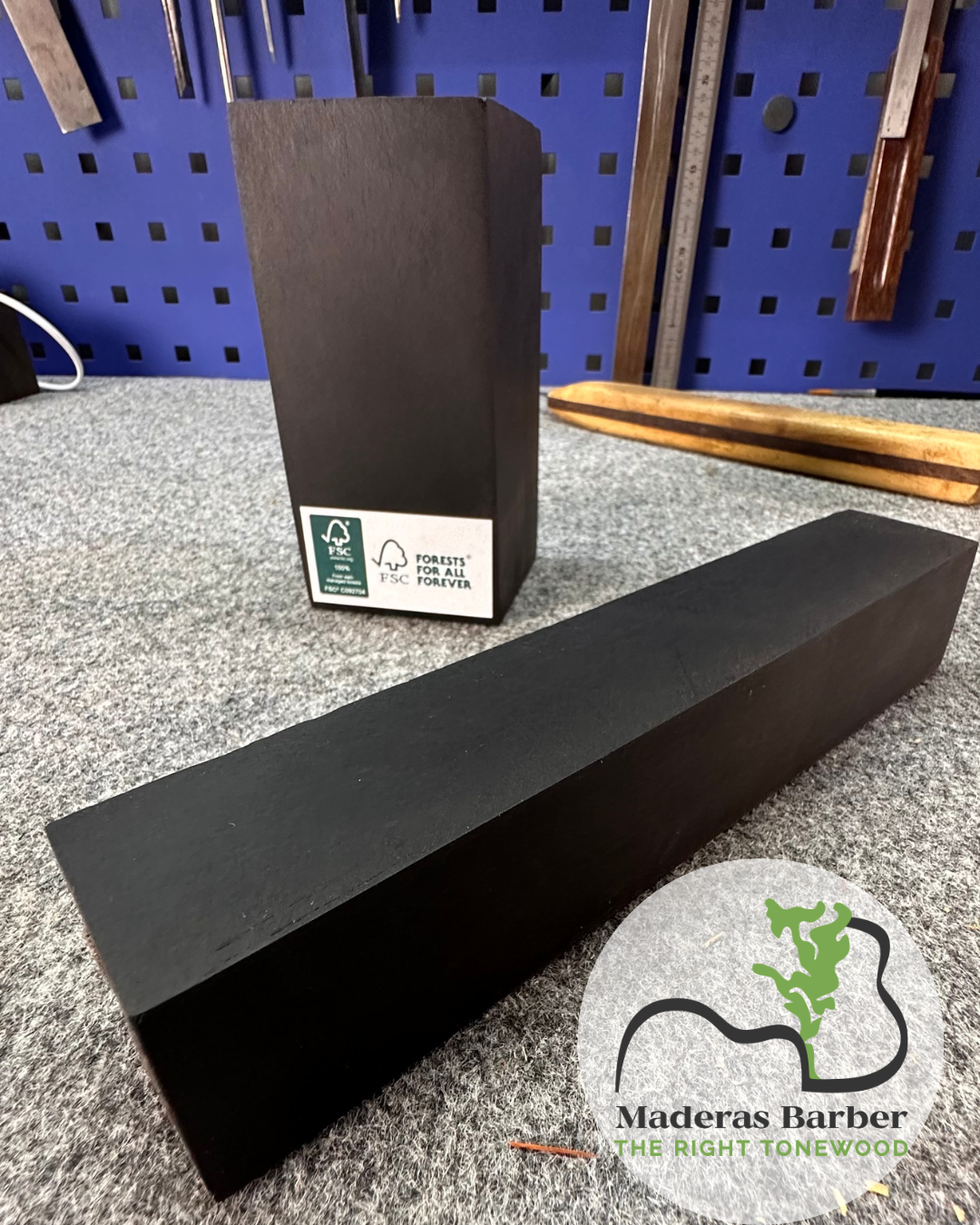- Tonewoods and other products
- 7 likes
- 5055 views
- 0 comments
Comments (0)
No comments at this moment

In this new post from Maderas Barber, we are going to share information about Blackwood.
This exotic wood is used by luthiers from around the world, primarily for wind instrument construction.
As this is a luthier blog, we will start this post with the part that interests us the most: the sound and musical value of Blackwood.
One of the most exciting aspects of Blackwood is its ability to produce a clear and resonant sound, making it the top choice for luthiers seeking perfection in the sound of the instruments they build. Blackwood is known for its exceptional ability to vibrate. This means that when a musician plays an instrument made with Blackwood, the produced notes are rich in harmonics and have a deep resonance that fills the sound space.
Due to its density, this wood offers a very quick response in terms of acoustic mechanics. Musically, this facilitates the execution of rapid passages and allows for greater expressive dynamics.
The clarinet has its roots in ancient instruments like the chalumeau, dating back to the 17th century. However, the modern clarinet as we know it today was developed in the 18th century, thanks to the contributions of Johann Christoph Denner and his nephew, Jacob Denner. Their invention allowed musicians to explore a wider range of tones and musical expression, making it an essential instrument in classical music.
As the clarinet evolved, instrument makers experimented with different types of wood to enhance its quality and sound. This is when Blackwood wood stood out as a key material. The density and moisture resistance of Blackwood are fundamental for the clarinet. The dense wood allows vibrations to flow effectively through the instrument, creating a bright and warm sound that makes it ideal for classical music and other genres. Additionally, Blackwood's resistance to moisture prevents the deformation of the instrument due to weather changes, which is vital for maintaining sound quality and tuning.
The bagpipe, a traditional Galician instrument that has also spread to other regions of Spain and Portugal, has a deep connection with Blackwood. The choice of this material in the construction of the melodic tubes of the bagpipe is essential for its distinctive sound.
Blackwood, with its density and durability, allows vibrations to flow effectively along the melodic tube, producing the bright and resonant tone that characterizes the bagpipe. Its resistance to moisture is essential for an instrument that is often played outdoors and exposed to variable weather conditions.
One of the best explanations of this comes from the bagpipe maker Jose Manuel Gil, who offered us an incredible interview some time ago.

While Blackwood is its commercial name, its botanical designation is Dalbergia melanoxylon, and it is native to West Africa. The Blackwood we currently have at Maderas Barber originates from Tanzania, and we import it to our warehouse already processed, as current regulations do not allow the export of unprocessed logs.
As for its characteristics, we can highlight that Blackwood is a densely branched shrub. We can see from the photographs that its growth is irregular, resulting in a non-cylindrical trunk. As a consequence, obtaining large pieces of this wood is very difficult, which is why Blackwood is considered a low-yield species.
One of the main properties of Blackwood is its high dimensional stability. But what does this mean? Dimensional stability is a qualitative term referring to the movement and transformations that wood undergoes in relation to changes in humidity and temperature in its environment. In practical terms, Blackwood's high dimensional stability means that it is resistant to cracking, warping, or deformation. It is also easy to store as it does not require strict temperature and humidity control to maintain its stability.
At Maderas Barber, we have Blackwood pieces that, in some cases, have been stored for up to 8 years. We also offer more than 50 available dimensions so you can choose the piece that best suits your project. Most of these dimensions are optimized for wind instrument construction, carving, and turning.
Blackwood is characterized by its dark brown to black color, with a homogeneous tone and a very attractive natural sheen. It has a density of over 1200 kg/m3 (although some pieces can reach up to 1400 kg/m3), making it an extremely hard wood resistant to abrasion.
It is widely used in the manufacture of high-quality musical instruments, and among our customers are luthiers, small artisan workshops, and large factories in Europe and Asia. Clarinets, flutes, oboes, and bagpipes are some of the instruments most commonly produced with this wood.
Remember that we have a large stock of FSC100% certified woods, with a wide variety of dimensions designed for each part of typical musical instruments made from this wood. This minimizes material waste in the production process.
Blackwood is not only a beautiful and durable wood but also has a significant impact on the sound quality of musical instruments. Luthiers seek Blackwood for its ability to create exceptionally clear, resonant, and expressive sound that elevates music to another level.
Save products on your wishlist to buy them later or share with your friends.

